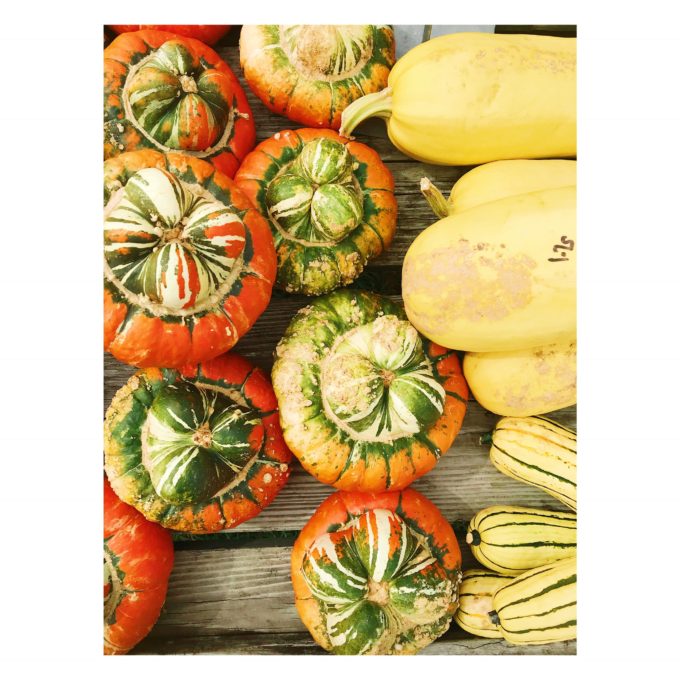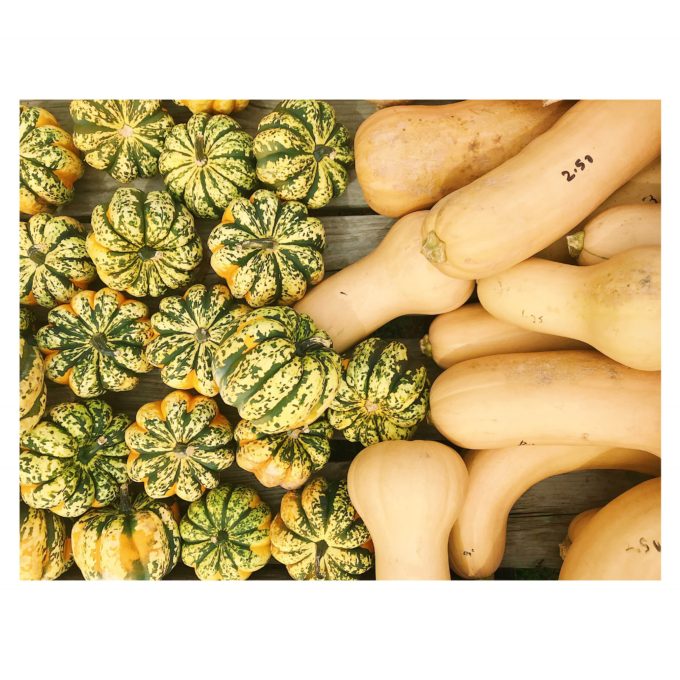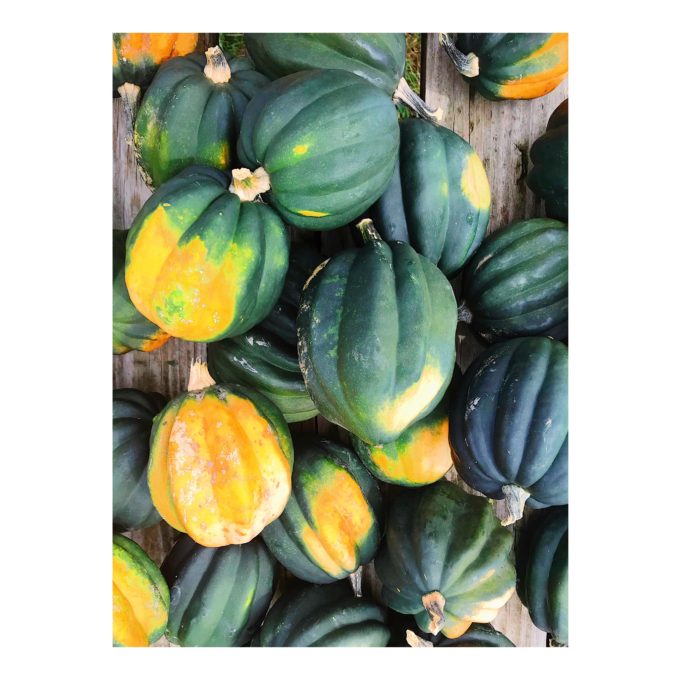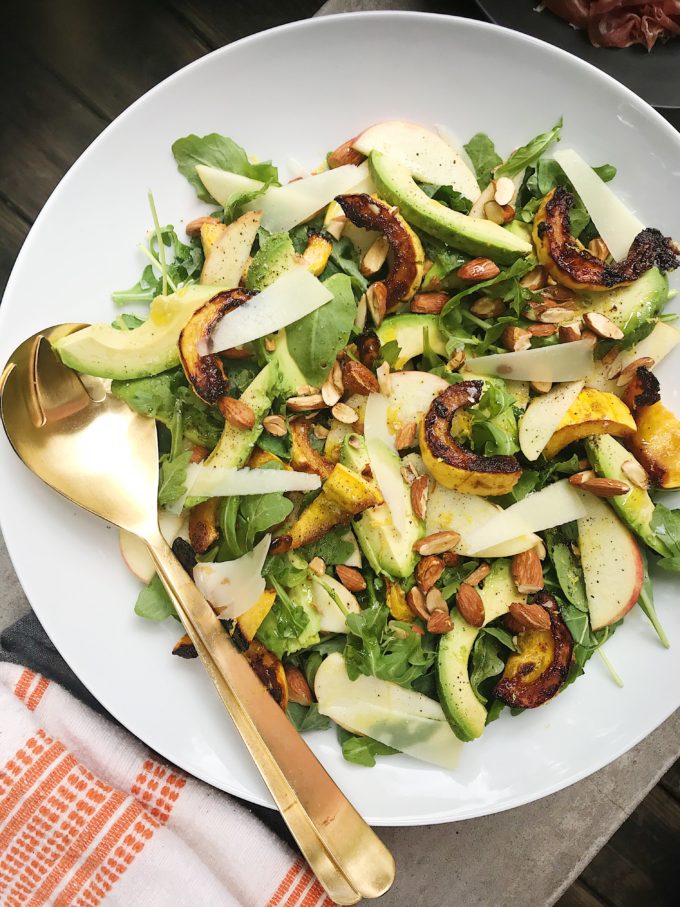
If you’ve walked around your local store you can’t help but notice a few things: pumpkin spice everything, halloween candy, and squash! I’d love to do a guide to the best halloween candy but that’s for another day. I’ve compiled a guide to help you determine which squash is best for your recipe and exactly how it should be cooked. The cool thing about these fall and winter gourds is they last a really long time, like six weeks to even a few months. And guess what? They’re technically fruit because they have seeds! Let’s get started.
Delicata Squash
Yellow and green, small, cylindrical. Pictured bottom right.
This is a go to squash because the skin is very edible and soft, the seeds come right out, and it’s small. I don’t love to make soup out of this one because it isn’t very meaty, but rather as a garnish for soup. Best cut into chunks and roasted or sauteed on high heat. Can be cut lengthwise and roasted in halves. Use in salads and as a side or garnish.
Spaghetti Squash
Yellow, cylindrical. Pictured top right.
Spaghetti squash is pretty amazing. This squash is perfect for replacing noodles since strands inside are exact replicas of spaghetti and the squash itself isn’t terribly flavorful. The skin is pretty tough, so I like to cut the squash into rounds, drizzle with olive oil, and roast on a sheet tray at 350* until soft. Then with a fork, remove the noodle-like strands from the skin and seeds, then toss with a good sauce. By cutting the squash into rounds instead of halving, your strands will be longer and more noodle like. You can also roast the squash halved, flesh side down. Remove the seeds and cover in sauce, eating out of the squash like a bowl!
Turban Squash
Orange and green, sometimes white. Round like a pumpkin but with a hat on top. Pictured left.
This unusual squash is fabulous in soup and since it is so thick skinned, will keep up to two or three months. It is very nutty and sweet, best being roasted and added to baked goods. Give this guy a hard roast and puree.

Butternut
Tan-ish orange, long bell shaped. Pictured right.
Butternut squash is probably the most well known squash we use in America. This is a very versatile squash and is my favorite to roast for soups because it is hearty and sweet. The skin peels away very easily with a Y shaped peeler when raw but is also soft enough to eat after it is roasted. Butternut squash is most delicious when it has a deep caramelized color on it, so either peel, cube, and roast on high heat, or half with the skin on and slow roast until tender. Use pureed in soup, as pasta sauce, baked goods or pies, or cubed and roasted. Butternut squash mac-and-cheese anyone?
Carnival Squash
Speckled green, yellow, and orange. Shaped similarly to an acorn squash. Pictured left.
Carnival squash is like an acorn squash and a sweet dumpling squash had a baby. This squash is easily used in place of butternut squash or acorn squash in recipes. It is much easier to cut than a butternut squash, as it’s flesh resembles a darker delicata. Impress your guests with this more rare squash and they’ll never know how easy it was to prepare.

Acorn Squash
Green and orange or yellow. Shaped like an acorn.
Acorn squash is one of the sweetest squash available and can be a lovely standalone dish. Roast this squash halved with the skin on, and then scoop the flesh away from the skin, and puree into a soup. You can also cut this squash into wedges and roast, or bake in halves and stuff with a quinoa and sausage stuffing, for example.
There are plenty more squash out there than the ones listed here, but once you get some general rules, you can cook any squash. Just remember: if a squash is heavy and dense with hard to peel skin, it’s probably best roasted or pureed with the skin off. If a squash has a thin skin and is a bit softer, it is delicious roasted and the skin can stay on. Get crazy and mix up a few different kind of squash in one dish for a beautiful medley of flavors.

Check out this Roasted Delicata, Apple, and Arugula Salad that Rian posted for a quick and easy way to start incorporating squash into your menu this week.
Happy fall!
-Annie
Annie Baker, you’re the best!
Wow. Who is this Annie Baker? She sounds amazing.